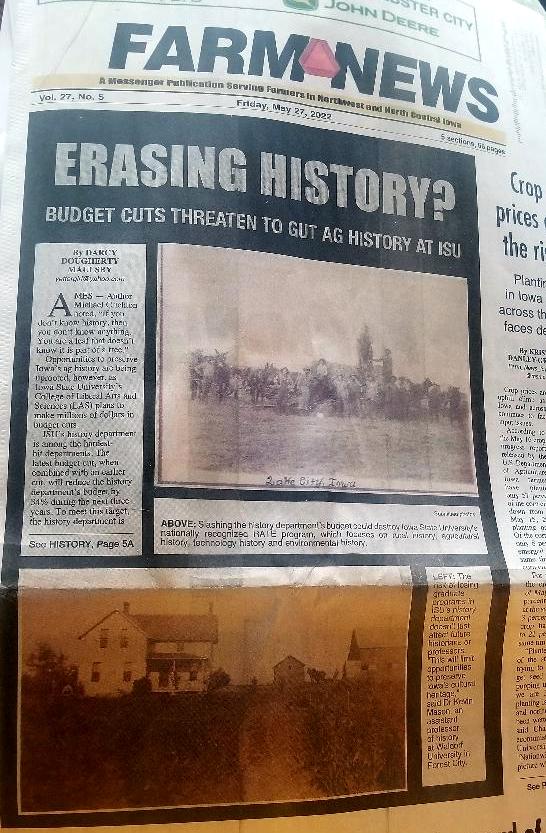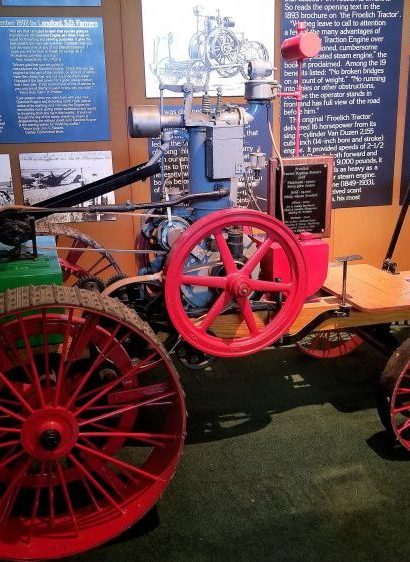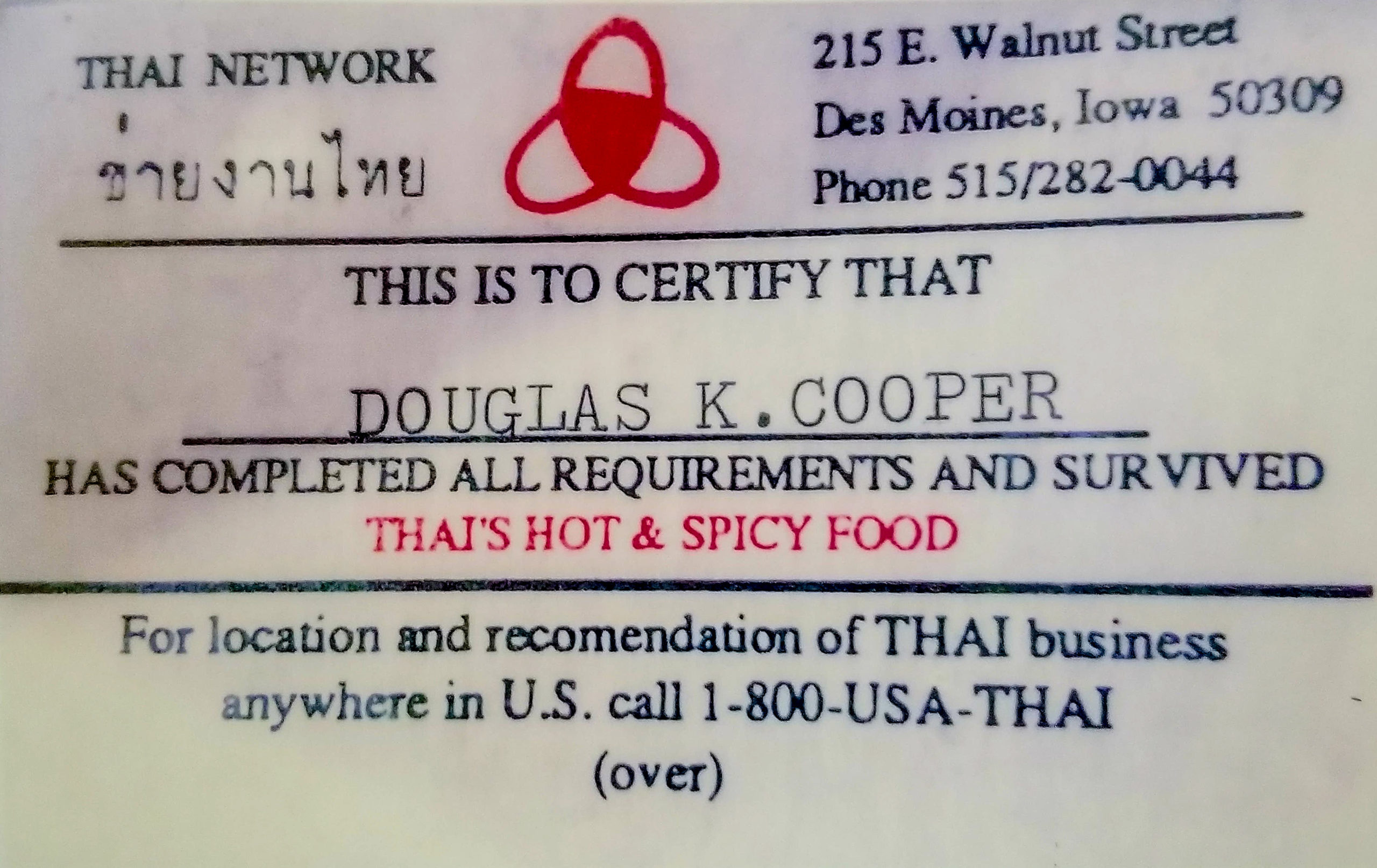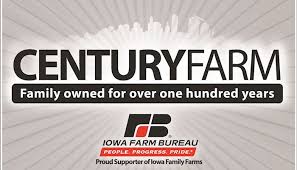
Whats HOT
Latest Posts

Long Live Print Newsletters! 5 Keys to Content Marketing Success
Notice the farmer said he doesn’t see the name John Deere popping up all over the stories in the magazine. If fact, it’s extremely rare. There’s a reason why. People know when they’re being sold.
If this sounds good, you might be wondering next steps. If you already have a newsletter program, how do you keep it going? If you had one but dropped it, how do you revive it? What if your company never had a newsletter program?
1. Add value. The #1 secret of any successful content marketing, including print marketing, is to add value for your audience. The easiest way to find good story ideas that add value? Become a detective. Ask your co-workers to provide answers to timely questions they are hearing from their clients and prospects. Don’t forget to have them think about the questions they think clients and prospects should be asking but aren’t. Then have your team provide the answers, which make a great foundation for newsletter content.
I know you still may have a lot more questions about content marketing or a print newsletter program. If so, let’s start the conversation.
Want more?
I invite you to read more of my blog posts if you value intriguing Iowa stories and history, along with Iowa food, agriculture updates, recipes and tips to make you a better communicator.
If you’re hungry for more stories of Iowa history, check out my top-selling “Culinary History of Iowa: Sweet Corn, Pork Tenderloins, Maid-Rites and More” book from The History Press. Also take a look at my other books, including “Iowa Agriculture: A History of Farming, Family and Food” from The History Press, “Dallas County” and “Calhoun County” book from Arcadia Publishing. All are filled with vintage photos and compelling stories that showcase the history of small-town and rural Iowa. Click here to order your signed copies today! Iowa postcards are available in my online store, too.
If you like what you see and want to be notified when I post new stories, be sure to click on the “subscribe to blog updates/newsletter” button at the top of this page, or click here. Feel free to share this with friends and colleagues who might be interested, too.
Also, if you or someone you know could use my writing services (I’m not only Iowa’s storyteller, but a professionally-trained journalist with 20 years of experience), let’s talk. I work with businesses and organizations within Iowa and across the country to unleash the power of great storytelling to define their brand and connect with their audience through clear, compelling blog posts, articles, news releases, feature stories, newsletter articles, social media, video scripts, and photography. Learn more at www.darcymaulsby.com, or e-mail me at yettergirl@yahoo.com.
Let’s stay in touch. I’m at darcy@darcymaulsby.com, and yettergirl@yahoo.com.
Talk to you soon!
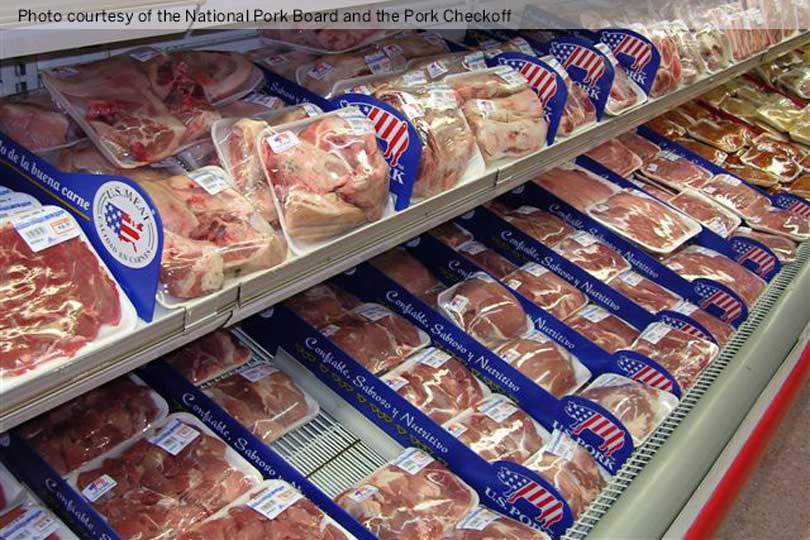
Myth Busting: No, Your Pork Doesn’t Come from China
There’s so much misinformation circulating on social media (and now I heard it on a radio program recently) that can be summarized as those “awful companies like Smithfield that raise pigs here in America but send them to China for processing before the meat is sent back to America to grocery stores–and then claim these are American products.” Aarrrgghh.
A caller to the talk show was irate about this, and the host agreed with her premise. Well, I’m not an expert in the meat industry, but I grew up on an Iowa hog farm, still live and work on an Iowa farm, worked in ag my entire career and know these things to be true:
1.) There’s a reason why new pork processing plants have been built in Iowa in recent years, like the new one near Eagle Grove. Iowa farmers raise a lot of pigs, and it makes economic and common sense to process the pigs close to where they are produced, rather than shipping them halfway around the world.
2.) Pigs that go to market weigh a lot (well over 200 pounds each, sometimes close to 300 pounds). Would it make any sense to ship them to China for processing and send the product back to America? Nope. Think how costly that would be.
I shared all this on a Facebook post the last week of April 2020 and was amazed when the post when viral within hours. Not only did the post garner 82 comments and 151 shares in less than a week, but it prompted many people to thank me for addressing this myth. I was pleased that my ag industry friends joined the conversation to combat fear with facts. One, a former executive with the National Pork Board, noted, “USDA has not approved China to ship pork to the U.S. In addition, China has lost half of their swine herd to African swine fever and is buying large amounts from anywhere they get their hands on it to address the shortage. They have no pork to export. End of story.”
Smtihfield Foods was founded in Smithfield, Virginia, in 1936 and was acquired by Hong Kong-based WH Group in 2013.
Smithfield has not, does not, and will not import any products from China to the United States. No Smithfield products come from animals raised, processed, or packaged in China. All our U.S. products are made in one of our nearly 50 facilities across America. These products are produced in compliance with the strict standards and regulations of the U.S. Department of Agriculture (USDA), U.S. Food and Drug Administration (FDA), and other federal and state authorities.
WH Group is a publicly traded company with shareholders around the world. Anyone anywhere can purchase shares of WH Group on the Hong Kong Stock Exchange under the stock code 00288. In fact, WH Group’s shareholders include many large U.S.-based financial institutions. It is not a Chinese state-owned enterprise and does not undertake commercial activities on behalf of the Chinese government.
How has the acquisition impacted the U.S. pork industry and the country’s economy?
Smithfield and the U.S. pork industry export products to China, benefitting American pork producers and processors. More exports to China mean more American jobs and more demand for products “Made in the USA,” and reduces the U.S. global trade deficit.
The bottom line? Don’t worry. Your pork doesn’t come from China.
Want more?
I invite you to read more of my blog posts if you value intriguing Iowa stories and history, along with Iowa food, agriculture updates, recipes and tips to make you a better communicator.
If you’re hungry for more stories of Iowa history, check out my top-selling “Culinary History of Iowa: Sweet Corn, Pork Tenderloins, Maid-Rites and More” book from The History Press. Also take a look at my other books, including “Iowa Agriculture: A History of Farming, Family and Food” from The History Press, “Dallas County” and “Calhoun County” book from Arcadia Publishing. All are filled with vintage photos and compelling stories that showcase the history of small-town and rural Iowa. Click here to order your signed copies today! Iowa postcards are available in my online store, too.
If you like what you see and want to be notified when I post new stories, be sure to click on the “subscribe to blog updates/newsletter” button at the top of this page, or click here. Feel free to share this with friends and colleagues who might be interested, too.
Also, if you or someone you know could use my writing services (I’m not only Iowa’s storyteller, but a professionally-trained journalist with 20 years of experience), let’s talk. I work with businesses and organizations within Iowa and across the country to unleash the power of great storytelling to define their brand and connect with their audience through clear, compelling blog posts, articles, news releases, feature stories, newsletter articles, social media, video scripts, and photography. Learn more at www.darcymaulsby.com, or e-mail me at yettergirl@yahoo.com.
Let’s stay in touch. I’m at darcy@darcymaulsby.com, and yettergirl@yahoo.com.
Talk to you soon!
Darcy
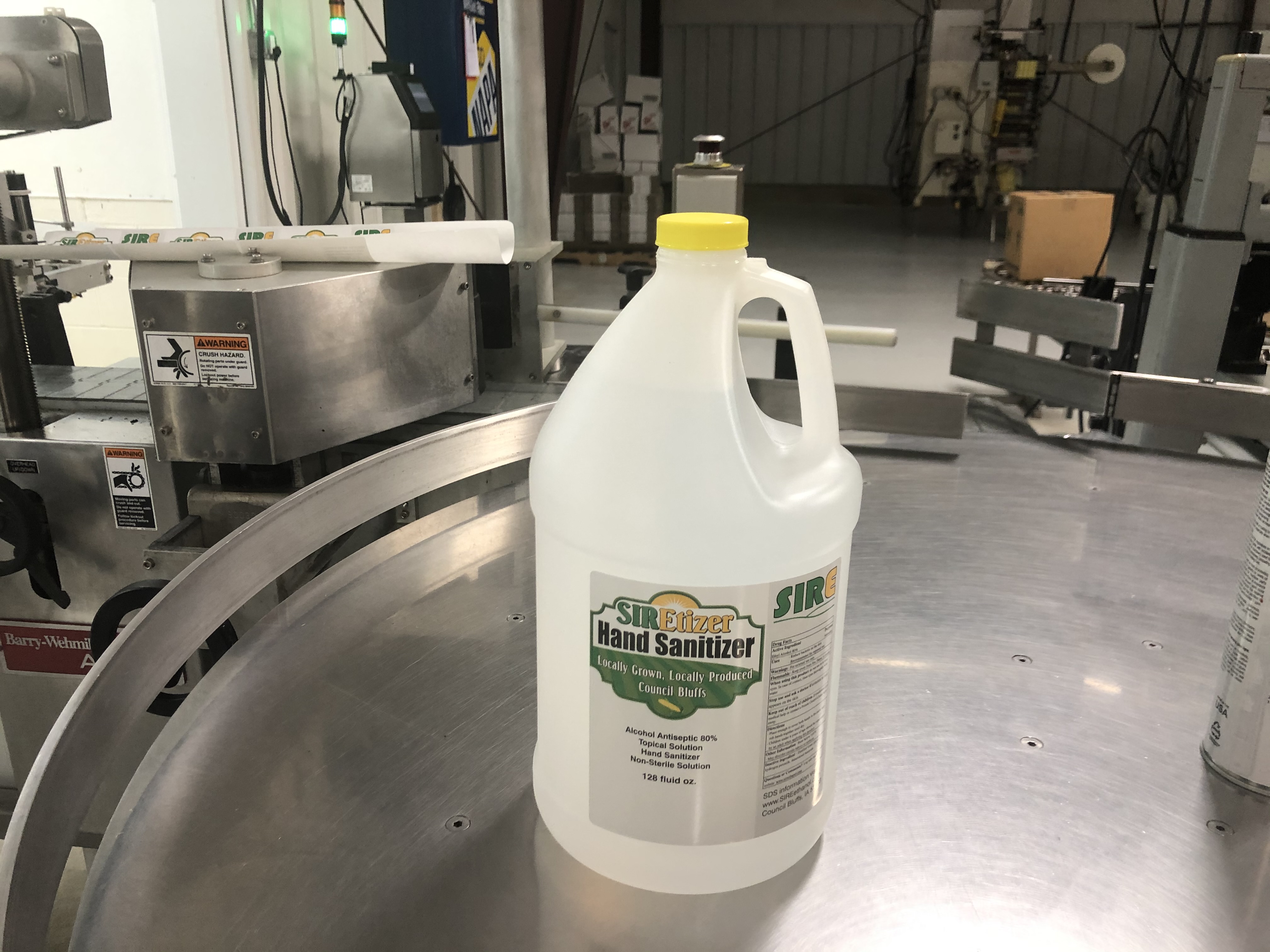
Sauce to Sanitizer: Cookies Food Products Bottles Hand Sanitizer Made with Ethanol
Going with the flow takes on a whole new meaning in times like this COVID-19 coronavirus pandemic. It also explains why ethanol-based hand sanitizer has been flowing through the bottling line instead of barbecue sauce at Cookies Food Products Inc. in Wall Lake, Iowa.
“I’m a firm believer you have to pay rent for the space you occupy while you’re here on earth,” said Speed Herrig, who has grown Cookies Food Products into one of the largest regional sauce manufacturers in the country in the past 40 years. “We want to do what we can to help.”
That’s why Herrig didn’t hesitate to offer his company’s bottling resources when he heard that Southwest Iowa Renewable Energy (SIRE) near Council Bluffs was trying to fill bottles by hand with ethanol-based hand sanitizer they’d produced. Filling bottles manually from large plastic totes was complicated and slow, especially when time is of the essence to help protect people’s health.
Herrig knew there was a better way. Just as General Motors retooled some of its production lines to make ventilators during the COVID-19 pandemic, Cookies made some small modifications on its equipment so employees could fill jugs with hand sanitizer instead of barbecue sauce. The Cookies team filled 5,000 1-gallon jugs with hand sanitizer in a couple days in mid-April for SIRE. “We’re fortunate to have a lot of long-term, experienced employees at Cookies, so it wasn’t too hard to make these changes,” Herrig said.
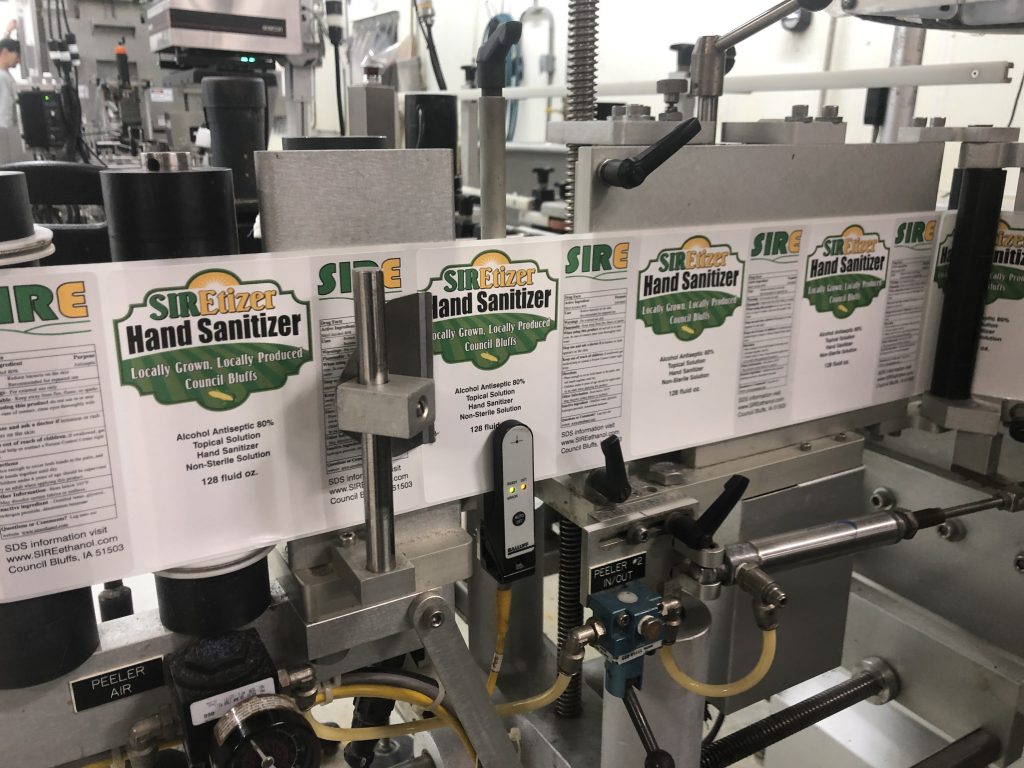 Corn-based solutions fuel innovation
Corn-based solutions fuel innovation
By early April, hospitals and nursing homes in Iowa and beyond were desperately searching for hand sanitizer, as demand for the product soared. Ethanol plants that can make large batches of sanitizer’s main ingredient, alcohol, offered to help.
The U.S. Food and Drug Administration (FDA) has stringent production standards designed to protect the quality of medicines, food ingredients and dietary supplements. Previously, the agency prohibited many ethanol plants from using their alcohol that didn’t meet high quality specifications for use in drugs or beverages.
In response to the COVID-19 pandemic, however, FDA revised its regulations, noted Justin Schultz, SIRE regulatory manager, who was quoted in the Council Bluffs Nonpareil newspaper several weeks ago. With the FDA’s new guidelines, ethanol made at plants that produce fuel ethanol can be used in a product like hand sanitizer, if the ethanol contains no additional additives or chemicals. Ethanol plants must also ensure water purity and proper sanitation of equipment.
SIRE produces more than 130 million gallons of fuel-grade ethanol per year and consumes more than 44.6 million bushels of corn annually. After FDA revised its guidelines this spring, SIRE shipped a few hundred gallons of pre-mixed hand sanitizer to Cookies’ Wall Lake bottling facility in early April. Once the Cookies team readjusted some settings to ensure the sanitizer would flow through their bottling system properly, they began filling 5,000 1-gallon plastic jugs.
The jugs of hand sanitizer were shipped to the Des Moines area to increase the state’s stockpile for distribution throughout Iowa. Herrig is glad that more people will be able to get the hand sanitizer they need, without being at the mercy of con artists.
“I’ve seen scammers selling hand sanitizer for well over twice the price it should be,” Herrig said. “Changing $75 a gallon or $10 for an 8-ounce bottle is outrageous. I don’t want to see anyone price gouging.”
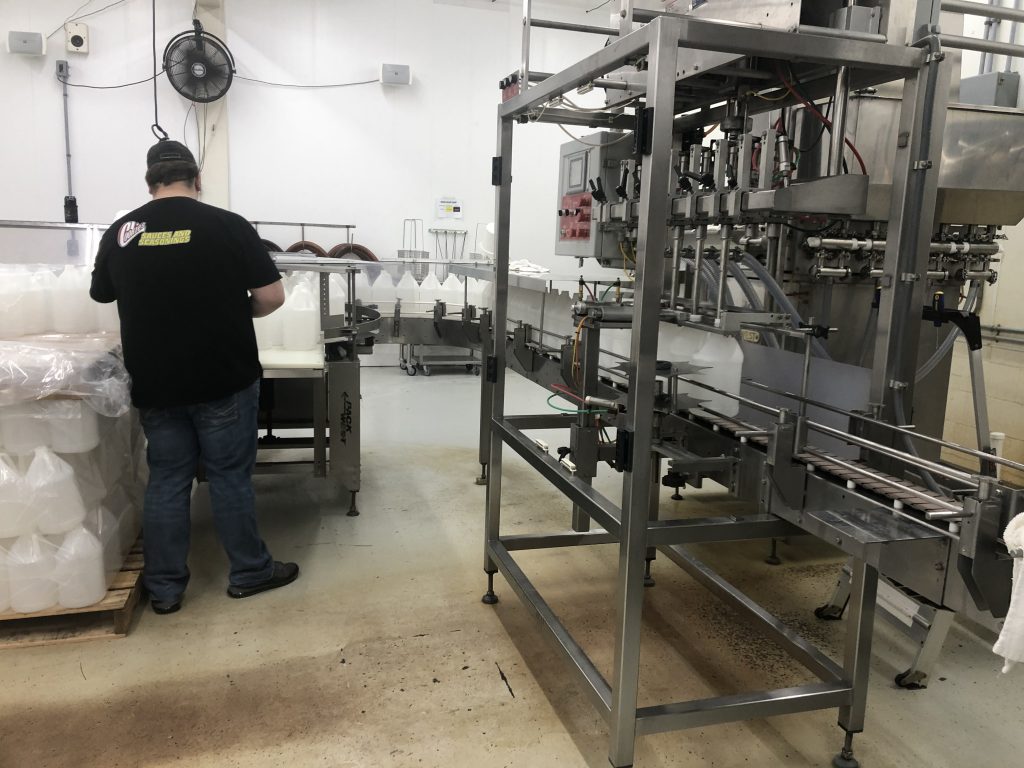
Giving back
While Herrig added that the Cookies team played a small role in the fight against COVID-19, they viewed this as a way to help their fellow Iowans in a time of need.
“We’ve enjoyed doing business in Iowa for many years through our sauce business, our automotive parts business and our golf cart business,” said Herrig, who opened an automotive parts and repair business in 1962 on his family’s farm near Wall Lake. “Iowa has been a good place for me, and I want to give back.”
This article first appeared in the April 24, 2020, issue of Farm News.
Want more?
I invite you to read more of my blog posts if you value intriguing Iowa stories and history, along with Iowa food, agriculture updates, recipes and tips to make you a better communicator.
If you’re hungry for more stories of Iowa history, check out my top-selling “Culinary History of Iowa: Sweet Corn, Pork Tenderloins, Maid-Rites and More” book from The History Press. Also take a look at my other books, including “Iowa Agriculture: A History of Farming, Family and Food” from The History Press, “Dallas County” and “Calhoun County” book from Arcadia Publishing. All are filled with vintage photos and compelling stories that showcase the history of small-town and rural Iowa. Click here to order your signed copies today! Iowa postcards are available in my online store, too.
If you like what you see and want to be notified when I post new stories, be sure to click on the “subscribe to blog updates/newsletter” button at the top of this page, or click here. Feel free to share this with friends and colleagues who might be interested, too.
Also, if you or someone you know could use my writing services (I’m not only Iowa’s storyteller, but a professionally-trained journalist with 20 years of experience), let’s talk. I work with businesses and organizations within Iowa and across the country to unleash the power of great storytelling to define their brand and connect with their audience through clear, compelling blog posts, articles, news releases, feature stories, newsletter articles, social media, video scripts, and photography. Learn more at www.darcymaulsby.com, or e-mail me at yettergirl@yahoo.com.
Let’s stay in touch. I’m at darcy@darcymaulsby.com, and yettergirl@yahoo.com.
Talk to you soon!
Darcy
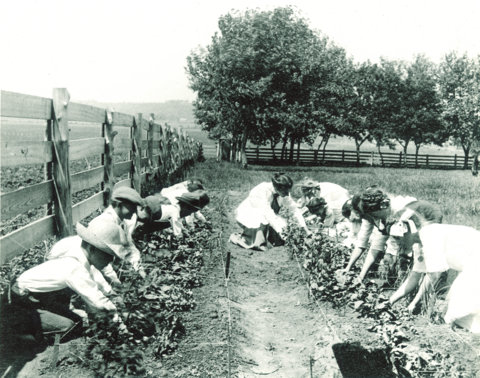
The Corn Lady: Jessie Field Shambaugh and the Birth of 4-H in Iowa
Well-behaved women rarely make history. At a time when young girls in rural Iowa generally weren’t encouraged to broaden their knowledge of agriculture, Jessie (Field) Shambaugh chose to attend educational farm meetings with her father by the time she was 12 years old. She went on to become one of the first female ag teachers in the nation. By the time she was 24, she was elected superintendent of schools for Page County, Iowa. “The Corn Lady,” as she was affectionately known, also helped guide the formation of an innovative new learning opportunity that endures today–4-H–with the goal to “make the best better.”
Farm women have long broken new ground in rural Iowa. Jessie Field Shambaugh (sister of the famous nursery and garden innovator Henry Field) guided the formation of today’s 4-H clubs during her tenure as a country schoolteacher in southwest Iowa.
Born in 1881 on a farm near Shenandoah, Shambaugh started her career teaching taught country school in southwest Iowa. By the turn of the twentieth century, “Miss Jessie” was a woman far ahead of her time. An innovative teacher, she introduced basic science classes in addition to the “3 Rs” in the country school curriculum. She believed in teaching country children in terms of country life and was a strong proponent of relating school lessons more closely to life on the farm and in the rural home.
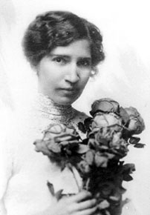
Jessie Field Shambaugh of Iowa
By developing the Boys’ Corn Club and the Girls’ Home Club, Miss Jessie created the forerunner of 4-H and became the first female ag teacher in the nation. Her knowledge of agriculture was extensive, as her father had encouraged her to learn about farming methods from the time she was a young girl. As early as age twelve, Miss Jessie attended local Farmers’ Institute meetings with her father and listened to presentations from ag leaders like “Uncle Henry” Wallace, who edited Wallaces’ Farmer.
Inspired by these ideas, Miss Jessie promoted hands-on, practical learning. She pioneered a powerful educational concept to help young people learn “to make the best better.” By age twenty-four, Miss Jessie had been elected superintendent of schools for Page County. She was one of the first female county superintendents in Iowa.
Starting in 1906, she enlisted the assistance of the 130 one-room country schools in the county to form boys’ and girls’ clubs. Miss Jessie encouraged the young people to participate in judging contests. She believed that friendly competition inspired students to excel. At the Junior Exhibits held at the Farmers’ Institute in Clarinda, entry classes for students included “Best 10 Ears of Yellow Dent Corn,” “Best Device Made by a Boy for Use on the Farm” and “Best 10 Ears of Seed Corn Selected by a Girl.”
Miss Jessie’s efforts gained national attention from educators and reporters. She hosted the U.S. Commissioner of Education and state superintendents as they toured Page County clubs in 1909. She designed the 3-leaf clover pin to reward 3-H project winners and wrote the Country Girls Creed. Jessie Field Shambaugh’s vision and pioneer spirit led to 4-H clubs nationwide, notes the Iowa 4-H Foundation.

4H logo
The goal was to “make the country life as rewarding as it might be in any other walk of life,” Miss Jessie noted in The Very Beginnings. While she passed away at age 90 in 1971, Shambaugh was inducted into the Iowa Women’s Hall of Fame in 1977, and her legacy lives on.
“My mother always wanted to help the farm boys and girls,” said Miss Jessie’s daughter, Ruth Watkins of Clarinda, whom I interviewed in 2002. “She had great idealism and was able to carry it through to reality.”
This is the spirit that inspired me to post this on March 8–International Women’s Day (IWD). I’ve long been inspired by rural Iowa women like Miss Jessie, who were breaking new ground as they became a force for good in their local community, long before the first IWD, which dates back to 1911. I think Miss Jessie would agree with the IWD’s philosophy that “We are all parts of a whole. Our individual actions, conversations, behaviors and mindsets can have an impact on our larger society.”
Want more?
Thanks for stopping by. Miss Jessie’s story is just one of the remarkable women featured in Chapter 9, “Iowa Women Blaze New Trails in Agriculture,” in my upcoming book Iowa Agriculture: A History of Farming, Family and Food, which will be release on April 27, 2020, by The History Press.
In the meantime, I invite you to read more of my blog posts if you value intriguing Iowa stories and history, along with Iowa food, agriculture updates, recipes and tips to make you a better
If you’re hungry for more stories of Iowa history, check out my top-selling “Culinary History of Iowa: Sweet Corn, Pork Tenderloins, Maid-Rites and More” book from The History Press. Also take a look at my latest book, “Dallas County,” and my “Calhoun County” book from Arcadia Publishing. Both are filled with vintage photos and compelling stories that showcase he history of small-town and rural Iowa. Order your signed copies today! Iowa postcards are available in my online store, too.
If you like what you see and want to be notified when I post new stories, be sure to click on the “subscribe to blog updates/newsletter” button at the top of this page, or click here. Feel free to share this with friends and colleagues who might be interested, too.
Also, if you or someone you know could use my writing services (I’m not only Iowa’s storyteller, but a professionally-trained journalist with 20 years of experience), let’s talk. I work with businesses and organizations within Iowa and across the country to unleash the power of great storytelling to define their brand and connect with their audience through clear, compelling blog posts, articles, news releases, feature stories, newsletter articles, social media, video scripts, and photography. Learn more at www.darcymaulsby.com, or e-mail me at yettergirl@yahoo.com.
Let’s stay in touch. I’m at darcy@darcymaulsby.com, and yettergirl@yahoo.com.
Talk to you soon!
Darcy
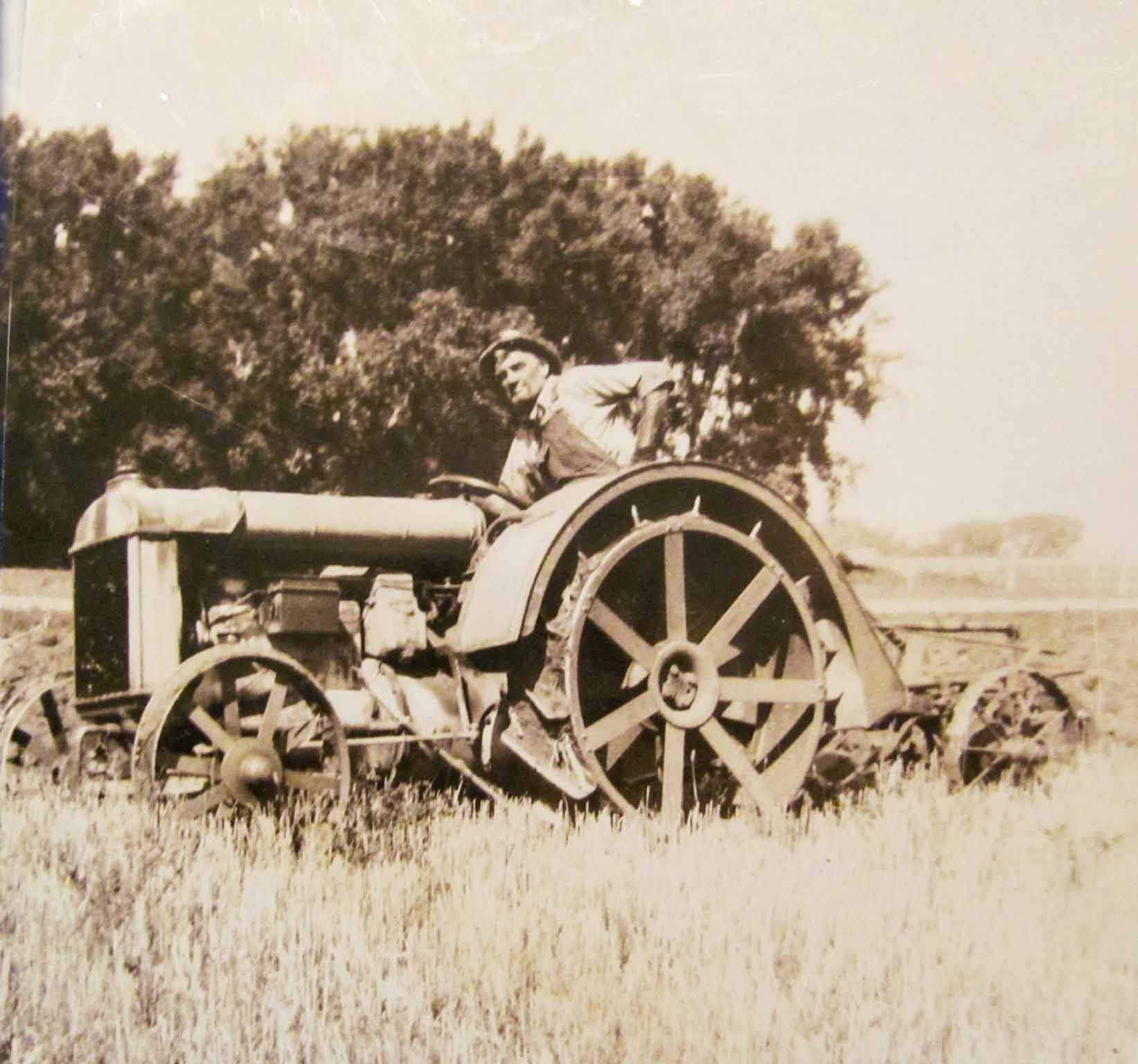
When Agriculture Entered the Long Depression in the Early 1920s
The culture of Iowa agriculture hasn’t only been shaped by good times. The farm crisis that started in the 1920s, a decade before the Great Depression engulfed America, shook rural Iowa to its core. In the post–World War I era, the Golden Age of Agriculture was over, and farmers throughout the Midwest began to suffer the effects of an increasing economic depression that culminated at the close of the 1920s with the stock market crash.
“To understand the nature of the agricultural problem more clearly, it needs to be said that farming is a difficult and uncertain profession,” noted Gary D. Dixon in his thesis “Harrison County, Iowa: Aspects of Life from 1920 to 1930,” which he presented in 1997 to the Department of History to earn his Master of Arts degree from the University of Nebraska–Omaha. “The farmer has no control over the prices he pays for goods or, more importantly, for what he can ask for his own products, as he ‘buys in a seller’s market, and he sells in a buyer’s market.”
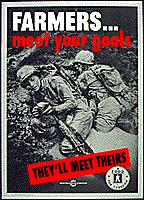
Wesells Living History Farm WW1
It was definitely a seller’s market during World War I, when all sectors of the American economy produced as much as possible to help the war effort. It was profitable, as well as patriotic, to raise crops at top capacity. But then the war ended on November 11, 1918.
“Government price supports for agriculture were kept through 1920, when the guaranteed prices on wheat and other crops were terminated,” Dixon noted. “The government ended loans to European nations at the same time, which meant they were unable to purchase U.S. agricultural products.”
This is what had kept the exports going, and exports had driven the boom in the U.S. farm economy. In the years just after World War I, prices for farm goods fell by half, as did farmer income. The Federal Reserve raised the credit rate just when the farmer needed its help the most, so money tightened up. Banks did not renew notes, but mortgages and bills still came due. To make it worse, the railroads raised their freight rates, so it was more expensive to get the crops to market, Dixon noted.
Farm income fell from $17.7 billion in 1919 to $10.5 million in 1921—nearly a 41 percent drop. In Iowa, farm values that had almost tripled between 1910 and 1920 plunged during the 1920s. In Harrison County in southwest Iowa, 1930 land values of $41 million reflected a drop of more than $35 million from 1920, Dixon said. In addition, Harrison County’s total crop values, which in 1919 were more than $10.8 million, fell to roughly $5.7 million by 1924. “Taxes on the remaining income, and the other expenses incurred in farming, remained as high as they ever were, or increased,” Dixon added.
While there had been a historic growth in the number and size of farms in the nation until 1920, that soon changed. Then the farm population showed net losses of 478,000 in 1922 and 234,000 in 1923. The more lucrative prospects of the city lured many of the best of the younger generations away, Dixon said.
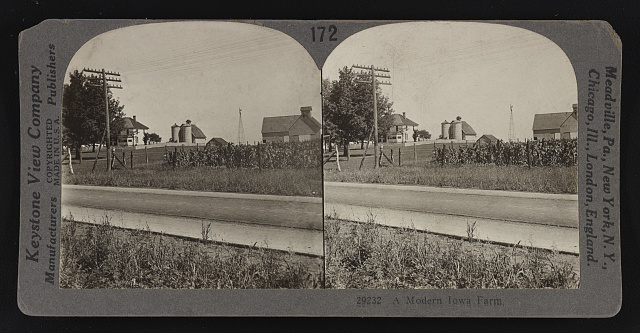
Iowa farm, 1920s Source: Library of Congress
Banding Together in Farmer Cooperatives
In response to these troubling developments, some farmers began organizing with their neighbors so their shared concerns could be heard at the county, state and national level. Some turned to groups like the Iowa Farmers Union, which had formed in 1915 to help members work together to strengthen the independent family farm through education, legislation and cooperation.
Others turned to a new group, the Iowa Farm Bureau Federation (IFBF), which had formed on December 27, 1918, during a meeting in Marshalltown. The sSeventy-two county Farm Bureau groups from across Iowa voted unanimously during this meeting to form a state federation. These farmers knew that they needed a stronger voice in legislation governing their industry, improved marketing for their ag products and better relationships with other related industries, including meatpackers and the railroads.
“We regard this movement as one of the most sensible efforts toward an organization of farmers that has yet been made,” said Henry A. Wallace, the editor of Wallaces’ Farmer, who went on to become U.S. secretary of agriculture and vice president of the United States.
The IFBF also helped support the cooperative marketing movement that had been gaining momentum, noted Tim Neiss, IFBF historian. Ag cooperatives had started to form in Iowa by the mid-1800s in response to unfair business practices by the railroads that hurt competition and lowered the prices farmers received for their products. Farmers began banding together to market their products more efficiently, at higher prices, as well as to buy inputs at lower cost.
One of these early Iowa cooperatives was Farmers Cooperative Elevator of Marcus, which was incorporated on December 12, 1887. The Marcus location, which is now part of First Cooperative Association based in Cherokee, remains the oldest active cooperative elevator in the nation.
While organizing into farm organizations and cooperatives appealed to some farmers, other farmers decided to move in a much more radical direction—one of that would culminate in the Farmers Holiday movement and the near-lynching of an Iowa judge in Le Mars. Get the whole story in my book Iowa Agriculture: A History of Farming, Family and Food, which is published by The History Press the week of April 27, 2020.
Want more?
Thanks for stopping by. I invite you to read more of my blog posts if you value intriguing Iowa stories and history, along with Iowa food, agriculture updates, recipes and tips to make you a better
If you’re hungry for more stories of Iowa history, check out my top-selling “Culinary History of Iowa: Sweet Corn, Pork Tenderloins, Maid-Rites and More” book from The History Press. Also take a look at my latest book, “Dallas County,” and my “Calhoun County” book from Arcadia Publishing. Both are filled with vintage photos and compelling stories that showcase he history of small-town and rural Iowa. Order your signed copies today! Iowa postcards are available in my online store, too.
If you like what you see and want to be notified when I post new stories, be sure to click on the “subscribe to blog updates/newsletter” button at the top of this page, or click here. Feel free to share this with friends and colleagues who might be interested, too.
Also, if you or someone you know could use my writing services (I’m not only Iowa’s storyteller, but a professionally-trained journalist with 20 years of experience), let’s talk. I work with businesses and organizations within Iowa and across the country to unleash the power of great storytelling to define their brand and connect with their audience through clear, compelling blog posts, articles, news releases, feature stories, newsletter articles, social media, video scripts, and photography. Learn more at www.darcymaulsby.com, or e-mail me at yettergirl@yahoo.com.
Let’s stay in touch. I’m at darcy@darcymaulsby.com, and yettergirl@yahoo.com.
Talk to you soon!
Darcy
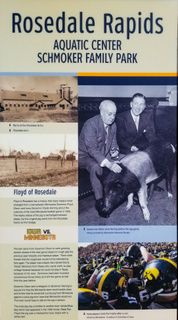
Iowa’s “Peacemaker Pig” Floyd of Rosedale Helped Calm Racial Tensions
If you follow college football in the Midwest, especially if you’re a University of Iowa Hawkeye football fan, you may know the story of Floyd of Rosedale. A bronze statue of the pig, Floyd of Rosedale, is exchanged between the two states. The original pig himself came from Rosedale Farms at Fort Dodge in north-central Iowa.
The whole deal emerged from a bet between Iowa Governor Clyde Herring and Minnesota Governor Floyd Olson about the outcome of the 1935 Iowa-Minnesota football game, but this story involves something much deeper than a famous pig and a bronze trophy.
The problem started the previous year, on Saturday, October 27, 1934, when rough play was directed towards one Iowa Hawkeye running back, Ozzie Simmons. Simmons was a rarity in that era: a black player on a major college football team. Dubbed the “ebony eel” by some sportswriters of the era, Simmons had come north to play football when he wasn’t allowed to play football in his home state of Texas, due to his race.
America in the 1930s included Jim Crow laws in southern states, which segregated blacks from whites. In northern states, no such laws existed, but discrimination was still widespread.
Simmons’ talent couldn’t be denied, however, and he attracted the attention of a young Iowa sports broadcaster perched high above the field. That broadcaster, who would become President Ronald Reagan, became an Ozzie Simmons fan, noted Minnesota Public Radio (MPR), which aired the story “The Origin of Floyd of Rosedale” in 2005. Reagan described a trademark Simmons’ move during a telephone interview with legendary Iowa sports broadcaster Jim Zabel of WHO Radio in Des Moines.
“Ozzie would come up to a man, and instead of a stiff-arm or sidestep or something, Ozzie — holding the football in one hand — would stick the football out,” Reagan said. “And the defensive man just instinctively would grab at the ball. Ozzie would pull it away from him and go around him.”
There were no dazzling runs against Minnesota, however, in the 1934 game at Iowa. Simmons was knocked out three times, leaving the game for good by halftime. The Gophers overwhelmed Simmons and the rest of the Iowa team, beating them 48-12.
While Minnesota went on to win the national championship that year, Iowa fans at the game were outraged by how Minnesota played, in Iowa City claiming the defense deliberately went after Iowa Simmons hard. (Just 11 years earlier, Iowa State’s first black athlete, Jack Trice, died of injuries sustained in a game at Minnesota in 1923.)
How Floyd of Rosedale was born
In 1935, the Rosedale Trophy debuted in an attempt to generate some goodwill between the two schools. Ahead of the 1935 game, Herring warned Minnesota not to pull the same stunts it did the year before. “If the officials stand for any rough tactics like Minnesota used last year, I’m sure the crowd won’t,” Herring said.
Olson sent a telegram to Governor Herring to assure him that the Minnesota team would tackle clean. To help calm the growing tension ahead of the next Minnesota-Iowa football game, Olson also went on to say that he would bet a prize pig from Minnesota against a prize pig from Iowa that Minnesota would win the big game. The loser would have to deliver the pig in person.
“Dear Clyde,” stated Olson’s telegram to Herring. “Minnesota folks are excited over your statement about the Iowa crowd lynching the Minnesota football team. If you seriously think Iowa has any chance to win, I will bet you a Minnesota prize hog against an Iowa prize hog that Minnesota wins today.”
The Iowa governor accepted, and what became known as the Floyd of Rosedale prize was born. Herring apparently followed Olson’s cue. He joked it would be hard to find a prize hog in Minnesota, since they all were so “scrawny.”

Floyd of Rosedale trophy
Word of the bet reached Iowa City as the crowd gathered at the stadium. Things calmed down, and the game proceeded without incident. Minnesota won 13-7.
The prize pig from Iowa was a Hampshire boar, black with a white belt. He was later named the Floyd of Rosedale after Minnesota’s governor. In the week following the big game, Herring delivered the live pig to the Minnesota Capitol building in St. Paul and took Floyd inside to meet Olson.
After the hog’s trophy days were over, Floyd spent his remaining days on a farm in southeast Minnesota. Floyd died of hog cholera in July 1936, about eight months after he made the front page. The real Floyd, Governor Olson, passed away less than a month later, dying of cancer in August 1936.
(Ironically, Floyd the hog wasn’t the only celebrity in his family. Floyd of Rosedale was the brother of another famous boar, Blue Boy, who had appeared in the 1933 movie “State Fair.”)
Leaving a legacy
All these years later, the famous Floyd of Rosedale endures as one of college football’s most famous trophies. Floyd of Rosedale’s legacy is also preserved in a marker by the Rosedale Rapids Aquatic Center in Fort Dodge.
Simmons, whose story prompted the Floyd of Rosedale trophy, never took much interest in the trophy, in part because of the era of racial discrimination it recalled. He was denied a chance to play professional football, because the National Football League banned black players at the time, noted MPR. He played some minor league ball, joined the Navy and eventually became a Chicago public school teacher.
“When Ozzie Simmons stepped onto the field in October, 1934, to play Minnesota, he entered a national drama that’s still playing out today,” MPR noted. “All Simmons wanted was a chance. The trophy is an ever-present reminder of how precious that right is.”
Want more stories like this?
These are the kinds of stories I’m sharing in my new book, “Iowa Agriculture: A History of Farming, Family and Food,” which was released by The History Press on Monday, April 27, 2020. Order your signed copy by clicking here to my online store.
One more thing–the story of illegal gambling
After I posted this story, I received this intriguing email from my friend Victoria Herring of Des Moines:
“You may remember coming to Artisan Gallery 218 to do book talks. I was reading your website about the Floyd of Rosedale story – apparently appearing in an upcoming book. I assume you know there’s a bit more to the story == I think George Mills wrote about it in one of his books == when this happened some guy [whose name I forget but he was a bit of a thorn in the side of some public figures] filed a criminal complaint against Gov. Herring [he was my grandfather] alleging illegal betting — might be an interesting even if a little off topic addition.”
I pulled out a copy of George Mills’ classic book, Looking in Windows: Surprising Stories of Old Des Moines, and saw exactly what Victoria was talking about. In the second called “A Governor Arrested,” Mills explained how a gadfly named Virgil Case in Des Moines got a warrant for Governor Herring’s arrest following the Floyd of Rosedale 1935 bet. The charge? Gambling on a hog wager.
At the time, Iowa law provided a penalty of up to a $100 fine or 30 days in jail for gambling. Municipal Judge J.E. Mershon signed the warrant.
Who was Case and why did he go to all this trouble? He was a “natural-born hell raiser,” wrote Mils, who added that Case had been a secretary to a Des Moines mayor and publisher of a weekly newspaper.
Case explained how he happened to file the charge. He said he had some spare time, and it occurred to him a “good way to put in that time was to go over to Municipal Court and have the governor arrested. So that’s what I did.” He said his profession was “raising hell with public officials because they should be the first to set a good example.”
Word of the warrant reached Herring while he was still with Minnesota Governor Olson in Minneapolis. Herring immediately engaged Olson as his attorney. Olson squelched a suggestion that the pig be auctioned off to pay a possible Herring fine. “That pig stays in Minnesota, regardless of what happens,” Olson declared. He added that the bet wasn’t a gamble anyway, since Minnesota was a cinch to win the game.
Olson suggested that Herring stay in St. Paul, where he couldn’t be extradited, since the Minnesota governor had to consent to the extradition, and Olson was already Herring’s attorney. Herring observed that only the governor of Iowa could extradite anyone back to Iowa–and he was the governor of Iowa.
“Olson added a sly insult when he said it wasn’t gambling because ‘nothing of value was involved,'” Mills wrote. Herring shot back that Floyd of Rosedale was a “right good hog.”
Walter Brick, deputy municipal court bailiff, cause a stir of excitement at the Iowa statehouse a few days later. When he showed up at Herring’s office, reporters thought maybe he was there to lead the governor away in handcuffs. Nope. Brick just wanted to talk over a planned court hearing on the charge.
The only action the deputy took that day was to join the reporters in eating apples out of Herring’s fruit basket. (“Beside apples, Herring was known at times to shut the door and provide the press with beer and Pella bologna, something no governor has done since,” Mills wrote.)
In the hearing, reporters and others testified that Herring hadn’t committed the so-called offense in Des Moines, that the bet wasn’t complete until Herring and Olson met in Iowa City. Assistant Polk County Attorney C. Edwin Moore, later chief justice of the Iowa Supreme Court, moved that the case be dismissed. Judge Mershon was glad to do so. “The folderol was over,” Mills concluded.
Want more?
Thanks for stopping by. I invite you to read more of my blog posts if you value intriguing Iowa stories and history, along with Iowa food, agriculture updates, recipes and tips to make you a better
If you’re hungry for more stories of Iowa history, check out my top-selling “Culinary History of Iowa: Sweet Corn, Pork Tenderloins, Maid-Rites and More” book from The History Press. Also take a look at my latest book, “Dallas County,” and my “Calhoun County” book from Arcadia Publishing. Both are filled with vintage photos and compelling stories that showcase he history of small-town and rural Iowa. Order your signed copies today! Iowa postcards are available in my online store, too.
If you like what you see and want to be notified when I post new stories, be sure to click on the “subscribe to blog updates/newsletter” button at the top of this page, or click here. Feel free to share this with friends and colleagues who might be interested, too.
Also, if you or someone you know could use my writing services (I’m not only Iowa’s storyteller, but a professionally-trained journalist with 20 years of experience), let’s talk. I work with businesses and organizations within Iowa and across the country to unleash the power of great storytelling to define their brand and connect with their audience through clear, compelling blog posts, articles, news releases, feature stories, newsletter articles, social media, video scripts, and photography. Learn more at www.darcymaulsby.com, or e-mail me at yettergirl@yahoo.com.
Let’s stay in touch. I’m at darcy@darcymaulsby.com, and yettergirl@yahoo.com.
Talk to you soon!
Darcy

Memories of Carroll County, Iowa, Century Farm Endure
Among the most remarkable parts of rural Iowa are the thousands of families who have owned the same land for 100 years. I’ve had the chance to interview hundreds of Iowa families who own Century Farms. Some of these folks, like Bill Bruggeman, share the kinds of stories you never forget.
After Bill passed away this week (read his touching obituary here), I felt that sharing his story would be a fitting tribute to a dedicated, kind, hard-working Iowa farmer I respect greatly Here’s his story, which I wrote in 2017 for Farm News:
While all the buildings that once graced the Bruggeman family’s Carroll County Century Farm between Lidderdale and Lake City are gone, the memories live on.
“The times keep changing,” said Bill Bruggeman, 85, who lives with his wife, Doris, on a farm a few miles northeast of his family’s Sheridan Township Century Farm. “This spring I saw a farmer on RFD TV who could plant 2,500 acres a day. This country is going big.”
It’s a big switch from the 120-acre Carroll County farm that Bruggeman’s grandfather, John Bruggeman, purchased in 1903. John and his wife, Emma, had farmed near Johnson, Nebraska, before deciding their farming prospects were brighter back in Iowa.
While Bruggeman didn’t grow up on the Century Farm where his grandparents lived, he has fond memories of the farmstead, which once boasted a large farmhouse and barn. “When I was a little kid I’d go across the fields on Saturday mornings to get Grandma Emma’s fresh-baked cinnamon rolls,” he recalled.
Good food was perk of farm life, which was often filled with long days of hard work and few luxuries. “We didn’t get electricity on the farm until the 1940s and didn’t get running water until the 1950s,” Bruggeman said.
Horsepower sometimes came from the family’s Farmall tractor, but it also came in the form of May and Babe. “I loved that team,” said Bruggeman, whose family used the horses to plant corn, pull the manure spreader and haul hay. “They didn’t run away.”
Those were the days when 12 neighborhood families worked together in a threshing ring, a tradition that lasted until the mid-1950s. While Bruggeman’s father, Carl, and the other men worked in the field, Bruggeman’s mother, Marie, prepared fried chicken, roast beef, mashed potatoes, fruit pies, cream pies and more to serve the hungry men at noon.
“Around 5 p.m. you’d haul the last load of the day,” said Bruggeman, who noted that the wives provided the threshing crew with snacks around 3 p.m. “The men were usually served supper, too.”
The day’s work wasn’t done, however, since each farmer had chores to do at home. “Back then, many farms had about 20 beef cows, some dairy cows and about 10 sows,” Bruggeman said.
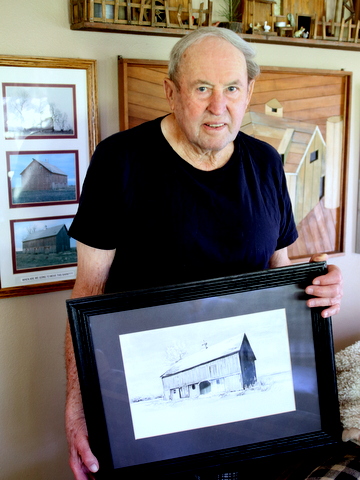
While the demands of farm work limited trips to town, there was fun to be had when it to was time to buy groceries. Bruggeman enjoyed the outdoor movies shown in Lidderdale in the summer months, back when the town had three grocery stories and about as many gas stations. “Dad would give me a nickel so I could get a pop or popcorn,” said Bruggeman, who recalled how cars were lined up on both sides of the town’s busy business district.
Money was hard to come by in those days, and crop yields were nowhere close to what farmers produce today. “When I was a kid, 60 bushels per acre of corn was a really good yield,” said Bill Bruggeman, who started farming full-time in 1955 after completing his military service. As improved corn hybrids become available, Bruggeman won the DEKALB Yieldmasters Club award in 1976 for producing 113.39 bushels of corn per acre.
While much has changed in agriculture since the Bruggemans were raising their four children (including Sheila, Brenda, Cathy and Brett) on the farm, the family is proud to honor the legacy of their Century Farm, which is now owned by Brett Bruggeman.
“It’s wonderful to have a Century Farm,” said Bruggeman, who retired from farming three years ago. “We’re lucky to have one.”
Bruggeman Carroll County Century Farm
• Established: 1903
• Township: Sheridan
• Acres: 120
• Century Farm Award given in 2016
• 4th generation farm
Want more?
Thanks for stopping by. I invite you to read more of my blog posts if you value intriguing Iowa stories and history, along with Iowa food, agriculture updates, recipes and tips to make you a better
If you’re hungry for more stories of Iowa history, check out my top-selling “Culinary History of Iowa: Sweet Corn, Pork Tenderloins, Maid-Rites and More” book from The History Press. Also take a look at my latest book, “Dallas County,” and my “Calhoun County” book from Arcadia Publishing. Both are filled with vintage photos and compelling stories that showcase he history of small-town and rural Iowa. Order your signed copies today! Iowa postcards are available in my online store, too.
If you like what you see and want to be notified when I post new stories, be sure to click on the “subscribe to blog updates/newsletter” button at the top of this page, or click here. Feel free to share this with friends and colleagues who might be interested, too.
Also, if you or someone you know could use my writing services (I’m not only Iowa’s storyteller, but a professionally-trained journalist with 20 years of experience), let’s talk. I work with businesses and organizations within Iowa and across the country to unleash the power of great storytelling to define their brand and connect with their audience through clear, compelling blog posts, articles, news releases, feature stories, newsletter articles, social media, video scripts, and photography. Learn more at www.darcymaulsby.com, or e-mail me at yettergirl@yahoo.com.
Let’s stay in touch. I’m at darcy@darcymaulsby.com, and yettergirl@yahoo.com.
Talk to you soon!
Darcy
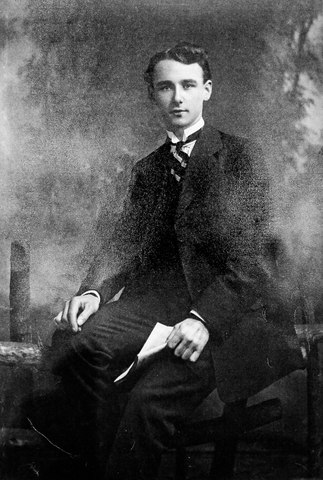
Independence, Iowa’s Connection to the Titanic and Carpathia
It’s amazing how many Iowans have ties to the Titanic, even all these years after the great ship sank. During a program at the Independence Public Library in June 2019, a lady named Ann Gitsch from Independence approached me following the program. As soon as she mentioned she had a relative on the Carpathia who helped rescue Titanic survivors, she had my total attention.
Ann mentioned that her family was from Northumberland in northeast England, and her grandmother, Wynanda Purvis was an aunt to Robbie Purvis, who was a steward on the Carpathia. Robbie Purvis was working on the Carpathia when the steamship rescued passengers from the Titanic during the early morning hours of April 15, 1912.
As Gitsch told me about Purvis, she handed me a copy of an unnamed publication with an article titled “Alnwick Schoolboy’s Experience.” (Alnwick is a town in Northumberland, England.)
The following article was taken from a 1912 letter Purvis wrote to his parents, including Mr. R. Purvis of Battery Hostel, Alnmouth, in northern England, following the Titanic disaster. The news article promised to be “of special interest to those were his [Purvis’s] schoolmates at the Duke’s School:”
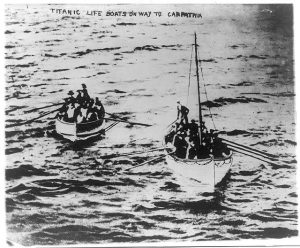
Survivors from the Titanic row towards the Carpathia
We have reached Gibraltar at last after the most eventful voyage I have ever experienced. I suppose you have seen the papers about the Carpathia getting the Marconi message which was sent from the Titanic before she went down. The captain got the message at 12:15. All the crew were in bed, so he sent down the chief steward to call all the stewards and stewardesses. At first the men would not get up. They thought it was just some boat drill they were wanted for, but they got up quick enough when they heard exactly what had happened—that the Titanic was sinking, and that the Carpathia had turned around and was going as hard as she could to assist her.
We got all together in the dining saloon, and the chief steward told us exactly what to do. Some were sent to carry blankets, other to lay up tables and make coffee, and some to man the boats in case they should be lowered.
I have an oar in Number 12 boat. We had the ship ready to receive 2,800 passengers by half past two. We got the first boat [from the Titanic] at 4 in the morning full of women and children. There were all nearly mad with cold. There was only two men in the boat—one a sailor who had gone mad. We hauled them all up the ship’s side with ropes tied around them and the children in canvas bags. We picked the last boat up at ? o’clock [newsprint here was illegible] and took altogether 780 persons safely on board. [Purvis’ count wasn’t quite accurate. Later accounts reported that Carpathia rescued 705 survivors from the Titanic, and rescue efforts were completed by 8:30 a.m. on Monday, April 15, 1912.]
We took eight dead bodies out of the boat and buried them at sea. We did not take any dead bodies into New York.
We came quite close to the iceberg which the Titanic struck. It was about a mile long and 100 feet high. There were plenty of bergs scattered about, but none so big as this one. We had to come right through amongst them in the dark looking for lifeboats. We sailed exactly over the spot where the Titanic went down, just a dark patch on the water with deck chairs and cushions and dead bodies (some babies) all floating about amongst the wreckage. It was a heart-rending sight.
When we got to New York, we had about 200 boats down to meet us, two American battleships amongst them. Men were down taking moving pictures of the ship docking, and of the Titanic’s passengers leaving her [the Carpathia]. Several of the passengers we brought back wanted to give us dinner, but the captain would not let us leave the ship, as we were sailing as soon as we could get coal in.
I am sending you an account of the wreck written by myself. I must now draw to a close, as I have no time for more now. I remain, etc., Robbie

Carpathia rescue ship
Iceberg “glistening in the morning sun like a tombstone”
Printed in this same newspaper, beneath Purvis’s letter, was a small section called “Notes from Carpathia,” which contained more details that Purvis jotted down:
“The Carpathia reached the scene of the disaster at 4 a.m. Everything was still. Lifeboats were scattered about the horizon, crowded with half-frozen, lamenting women and children, whose dear ones had been so ruthlessly snatched from them. A giant iceberg loomed up, glistening in the morning sun like a tombstone. A huge dark patch on the icy water with many bodies mingled with wreckage, marked the spot where the ill-fated Titanic went down.
Bodies floated about among the wreckage. Some were those of women and children, others of weather-beaten sailors, whose horny fingers had grasped a floating spar till God had relieved them of their sufferings. The Carpathia sailed on around the scene of the disaster, the dark, icy water lapping against her iron sides, as if mocking her for being too late.”
Want more?
Thanks for stopping by. I invite you to read more of my blog posts if you value intriguing Iowa stories and history, along with Iowa food, agriculture updates, recipes and tips to make you a better communicator. My new non-fiction book, “Iowa’s Lost History on the Titanic,” will be coming out in 2019. In the meantime, click here to get a taste of the fascinating stories you’ll find in this book.
If you’re hungry for more stories of Iowa history, check out my top-selling “Culinary History of Iowa: Sweet Corn, Pork Tenderloins, Maid-Rites and More” book from The History Press. Also take a look at my latest book, “Dallas County,” and my Calhoun County” book from Arcadia Publishing. Both are filled with vintage photos and compelling stories that showcase he history of small-town and rural Iowa. Order your signed copies today! Iowa postcards are available in my online store, too.
If you like what you see and want to be notified when I post new stories, be sure to click on the “subscribe to blog updates/newsletter” button at the top of this page, or click here. Feel free to share this with friends and colleagues who might be interested, too.
Also, if you or someone you know could use my writing services (I’m not only Iowa’s storyteller, but a professionally-trained journalist with 20 years of experience), let’s talk. I work with businesses and organizations within Iowa and across the country to unleash the power of great storytelling to define their brand and connect with their audience through clear, compelling blog posts, articles, news releases, feature stories, newsletter articles, social media, video scripts, and photography. Learn more at www.darcymaulsby.com, or e-mail me at yettergirl@yahoo.com.
Let’s stay in touch. I’m at darcy@darcymaulsby.com, and yettergirl@yahoo.com.
Talk to you soon!
Darcy
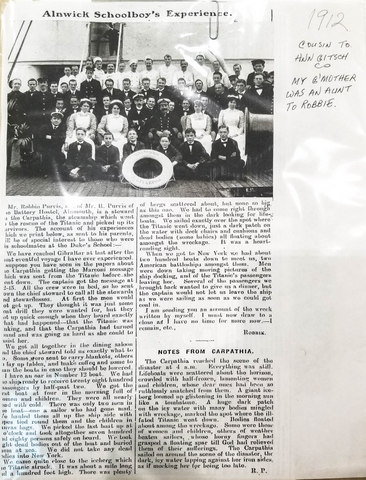
1912 news clipping sharing Robbie Purvis’ Titanic story

What’s the Scoop? Expanded Wells’ Ice Cream Parlor Offers a Taste of Iowa
Love ice cream? Think you can handle something as outrageous as the Monster Peanut Butter Cup Sundae? Then you MUST visit Le Mars, Iowa, soon. Everything is bigger and better at the revamped Wells Visitors Center and Ice Cream Parlor in downtown Le Mars, from the extreme milkshakes and sundaes (Savannah Peach, anyone?) to the spacious parlor itself, where you
can enjoy their sweet treats in the retro-styled dining area or new movie theater upstairs.
“This is a one-of-a-kind experience,” said Adam Baumgartner, vice president of retail sales for Wells Enterprises, Inc., whom I visited with during a recent media day at the ice cream parlor. “Beyond the Iowa State Fair, we want to make this the single-biggest tourist attraction in Iowa.”
More than 200,000 people have visited the parlor each year since it opened in 2011. “Our goal is to more than double that,” said Baumgartner, who noted that the remodeled parlor/visitor center blends education, entertainment and unique experiences for guests of all ages.
In the past year, Wells has invested $3 million in upgrades and expansions for the rebranded facility, which is housed in a historic 1917 building on Central Avenue. Highlights include:
• An interactive “farm to spoon” look at ice cream, from the dairy farm to the grocery store.
• An expanded ice cream menu with more novelties, extreme shakes and desserts, including the Lemon Meringue Shake, Monster Peanut Butter Cup Sundae, Molten Chocolate Lava Shake and more.
• An ice cream cone-shaped display where guests can take fun selfies and share them through text messages and social media.
• A rooftop seating area with views of historic downtown Le Mars.
• Handicap accessibility throughout the building.
• Event center space that can hold up to 200 guests. The space can be rented for parties, meetings and other gatherings.
• The Wells Family Theater, where a short film plays multiple times each hour to tell the story of how Wells and Le Mars came together.
• An engaging Heritage Wall filled with vintage pictures and more to document the unique history of Wells.
• An updated gift shop filled with ice cream-inspired items.
• More space to house all these attractions. The remodeled visitor center/ice cream parlor includes 19,000 square feet, up from 12,000 square feet.

Guests can visit the revamped Wells Visitors Center and Ice Cream Parlor in downtown Le Mars. Members of the Wells team have been welcoming the media and the public to the remodeled facility. Shown here (left to right) are Shannon Rodenburg, Visitor Center marketing and tourism manager; Brenda Phelan, associate manager of food operations: Jean Ann Weiland, associate manager of team operations; Adam Baumgartner, vice president of retail sales; and Brett Susemihl, manager of the Visitor Center and Ice Cream Parlor.
Above all, the parlor reflects Wells’ mission to bring joy to everyday life because of the love of ice cream. “We’re building on a unique family legacy,” Baumgartner said. “We want to put a smile on the face of ice cream lovers for years to come.”
Discover the history of the sweetest place on Earth
All this drives economic development in rural Iowa. Wells employs nearly 3,000 people and produces 150 million gallons of ice cream each year.
“Wells gets all of its fresh dairy from within 75 miles of our production facilities in Le Mars,” said Shannon Rodenburg, marketing and tourism manager for the Wells Visitor Center and Ice Cream Parlor. “Wells collects and processes more than 20 tankers of milk each day, 365 days a year.”
It all began on Oct. 24, 1913, when Fred H. Wells signed a contract with Ray Bowers, a dairy farmer in Le Mars, for “one grey horse, one milk wagon, two barn cans, three 20-quart jars, 60 half-pint jars and the good will of the milk business he has in the city of Le Mars, Iowa,” all for $250. (That’s roughly $6,400 today.) The original contract granted Wells the milk distribution route and guaranteed a source of raw milk from Bower’s herd of 15 cows.
Around 1925, Wells and his sons began manufacturing ice cream in Le Mars. As the popularity of their ice cream grew, they quickly branched out and began distributing their frozen confections in Remsen and Alton, Iowa, the following year. By 1927, Wells and his brother, Harry C. Wells, began a partnership to distribute ice cream in Sioux City.
A big change occurred, however, in 1928, when Fairmont Ice Cream purchased the ice cream distribution system in Sioux City from the Wells brothers, along with the right to use the Wells name. That could have been the end of the ice cream business for Wells, but it wasn’t.
Seven years later, in 1935, the Wells brothers decided to again sell ice cream in Sioux City. No longer able to use the name “Wells,” the brothers decided to run a “Name That Ice Cream” contest in the Sioux City Journal. A Sioux City man, George Vanden Brink, won the $25 cash prize for submitting the winning entry, “Blue Bunny,” after noticing how much his son enjoyed the blue bunnies in a department store window at Easter time. Vanden Brink, who was an illustrator by trade, also created the first Blue Bunny logo, which appeared on Blue Bunny packaging for nearly 70 years.

The revamped Wells Visitors Center and Ice Cream Parlor offers an expanded ice cream menu with more novelties, extreme shakes and desserts, including the Monster Peanut Butter Cup Sundae.
What started as Blue Bunny Ice Cream® has grown to include multiple brands and licensed products today. The company makes nearly 1,000 different products, Baumgartner said.
In fact, there is more ice cream made in Le Mars than in any one location on Earth, making Le Mars the Ice Cream Capital of the World—a title the community has held since Iowa’s state legislature made it official in 1994.
Bringing the ice cream story to life
From a single delivery wagon to the world’s largest family-owned and managed ice cream producer, Wells’ 100+ years in the industry is a pretty sweet story. The company has set its sights on becoming the leading ice cream manufacturer in the nation.
Giving Wells’ ice cream parlor/event center a facelift is part of a bigger goal to make Le Mars a destination, Baumgartner said. “Iowa has a lot of great things to offer. This is a place you have to see. You’ll love it.”
Want more?
Thanks for stopping by. I invite you to read more of my blog posts if you value intriguing Iowa stories and history, along with Iowa food, agriculture updates, recipes and tips to make you a better communicator.
If you’re hungry for more stories of Iowa history, including more stories of Wells and Blue Bunny, check out my top-selling “Culinary History of Iowa: Sweet Corn, Pork Tenderloins, Maid-Rites and More” book from The History Press. Also take a look at my latest book, “Dallas County,” and my Calhoun County” book from Arcadia Publishing. Both are filled with vintage photos and compelling stories that showcase he history of small-town and rural Iowa. Order your signed copies today! Iowa postcards are available in my online store, too.
If you like what you see and want to be notified when I post new stories, be sure to click on the “subscribe to blog updates/newsletter” button at the top of this page, or click here. Feel free to share this with friends and colleagues who might be interested, too.
Also, if you or someone you know could use my writing services (I’m not only Iowa’s storyteller, but a professionally-trained journalist with 20 years of experience), let’s talk. I work with businesses and organizations within Iowa and across the country to unleash the power of great storytelling to define their brand and connect with their audience through clear, compelling blog posts, articles, news releases, feature stories, newsletter articles, social media, video scripts, and photography. Learn more at www.darcymaulsby.com, or e-mail me at yettergirl@yahoo.com.
Let’s stay in touch. I’m at darcy@darcymaulsby.com, and yettergirl@yahoo.com.
Talk to you soon!
Darcy

In the past year, Wells has invested $3 million in upgrades and expansions for the Wells Visitors Center and Ice Cream Parlor in downtown Le Mars. Guests can enjoy their ice cream in the retro-styled dining area or new movie theater upstairs.
@Copyright 2019 Darcy Maulsby & Co. Blog posts may only be reprinted with permission from Darcy Maulsby.
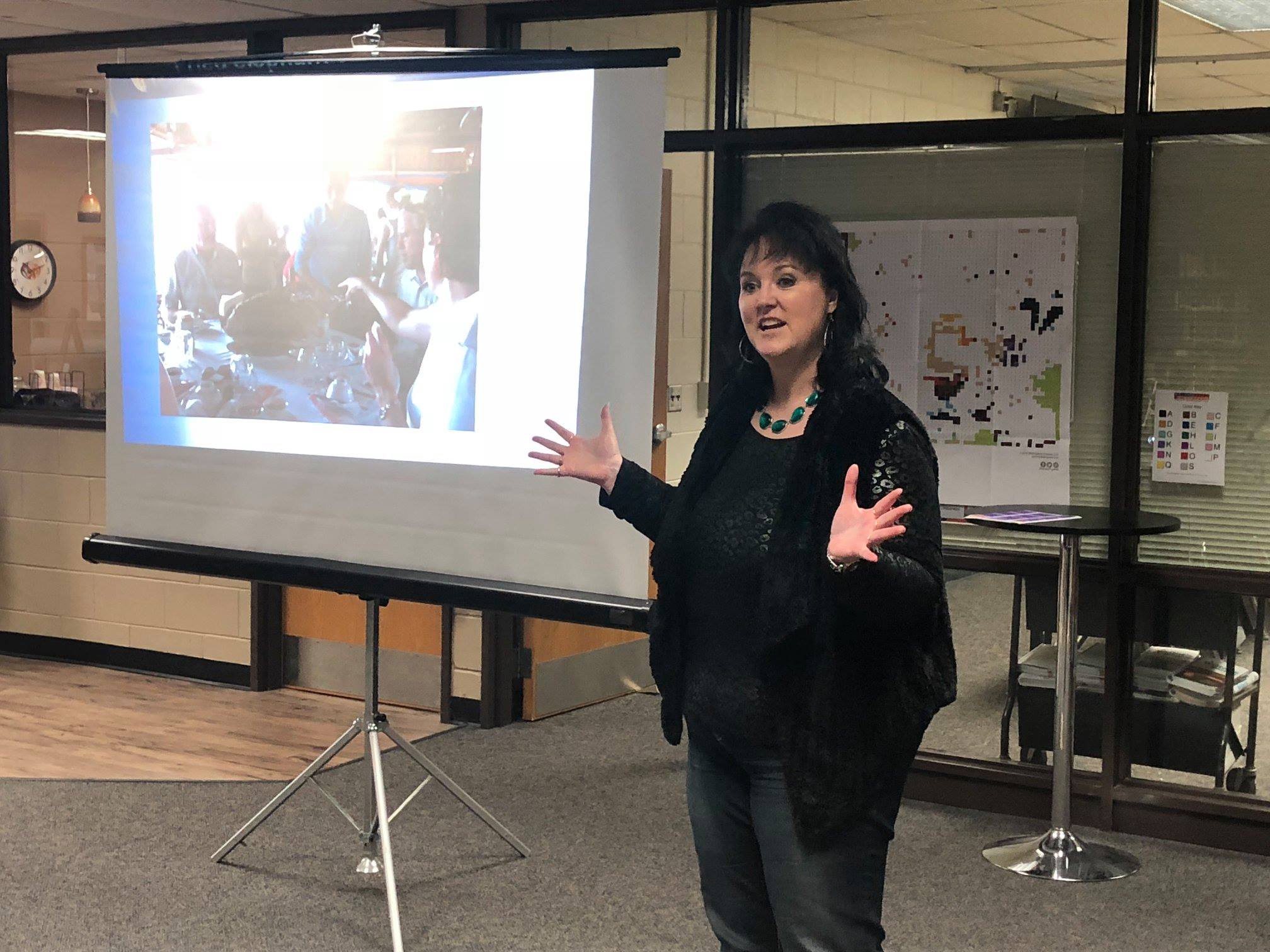
Why We Should Never Stop Asking Why
Ever been asked to speak at career day at the local middle school? If you haven’t, trust me when I say it’s an eye-opening, slightly nerve-wracking experience.
I volunteered with the Calhoun County Farm Bureau to speak at Ag Day on March 26 at the Manson Northwest Webster Middle School about my travels to Vietnam and South Korea a few years ago with the Iowa Corn Growers’ I-LEAD leadership group.
Then I headed west to Sac City on March 29 to share my “True Confessions of an Ag Journalist” program during the Sac County Farm Bureau’s I Am Ag career day, where professionals from veterinarians to bankers spoke about the pros and cons of their careers.
Throughout the day, each speaker is assigned a classroom, and we share our story 12 times in 25-minute segments. I always go home from these events exhausted, but I hope I added value for the students and helped spark their desire to keep learning.
What always amazes me is how different the response is from the sixth graders to the eighth graders. The sixth graders are excited to learn and have no fear of asking questions. In fact, many of them are quick to raise their hands to ask questions and share comments.
Everything changes when the eighth graders walk in the room. Many of these kids want to show you just how bored they are. Some convey clearly through their body language and comments that don’t want to be stuck in a classroom. Their eyes tell you in no uncertain terms that they’re just waiting to defy anyone who dares to challenge them to think and learn.
Undaunted, I tell every group of students I work with that one of the keys to being a successful writer/storyteller/journalist (or any leader, for that matter) is to be like the little kid who never stopped asking why. Always nurture your sense of wonder and curiosity. Not only is that how we learn, but it makes life more fun!
Why do we lose the why?
This experience made me wonder why so many people lose their desire to ask questions.
A Newsweek story, “The Creativity Crisis,” described the signs of declining creativity among our school children. The article noted that preschool kids ask their parents an average of 100 questions a day. WOW! By middle school, however, kids basically stop asking questions.
It is also around this time student motivation and engagement drop like a rock. Why? Our educational system tends to reward students for having the answer, not for asking good questions. Ask a question, and you risk looking ignorant.
Yet knowing how to ask the right questions in the right way is essential to career success, more enjoyable conversations, stronger interpersonal relationships and effective leadership. I can only tell compelling, clear stories for my clients and through my books when I ask the right questions.
 Questions I use
Questions I use
I often work from a tried-and-true, proven set of open-ended questions that encourage sources to open up so we can go beyond the superficial and dig deeper to get to the good stuff—the defining moments, the setbacks, and the dreams that add life and vitality to any story.
Here are some of my key questions
1. What’s some of the best business advice—or advice for life—you’ve ever received?
2. What’s your motivation (for your work, or your life)?
3. What three things inspire you? (These can be people, books, movies, art, places, etc.)
4. What three words describe you?
5. What three words describe your company?
6. What’s something odd/interesting/unique about you? (This fun fact should not be so personal you would only share it with a therapist, but also not so safe it will bore us!)
7. How did you get started in the business you’re in?
8. Think back to when you first hit adulthood. What did you think your life would be like? What was your plan A? Are you still with Plan A, or did you move on to Plan B?
9. What obstacles did you overcome to get where you are today?
10. What’s a specific story of success in your business that drives you to do what you do? (A customer that really affected you, a person you were able to help, an accomplishment you were able to achieve?)
11. What do you like about your work?
12. What helpful lessons did you learn from previous jobs that you apply to your current role?
13. What’s the weirdest thing that’s ever happened to you at work?
14. What’s the best thing that ever happened to you/you witnessed at work?
15. How did your company get started?
16. What excites you about the future?
You can modify these questions (or create your own) and put them to work in your business, your home or your classroom. Please tell me how it goes, too. Don’t be surprised if I ask you why you think these questions work. I love to learn and hope you do to, too!
No matter what, never stop asking “why” about the world around you. We need more critical thinkers. Also remember the words of playwright George Bernard Shaw: “Some men see things as they are, and ask why. I dream of things that never were, and ask why not.”
Want more?
Thanks for stopping by. I invite you to read more of my blog posts if you value intriguing Iowa stories and history, along with Iowa food, agriculture updates, recipes and tips to make you a better communicator.
If you like what you see and want to be notified when I post new stories, be sure to click on the “subscribe to blog updates/newsletter” button at the top of this page, or click here. Feel free to share this with friends and colleagues who might be interested, too.
Also, if you or someone you know could use my writing services (I’m not only Iowa’s storyteller, but a professionally-trained journalist with 20 years of experience), let’s talk. I work with businesses and organizations within Iowa and across the country to unleash the power of great storytelling to define their brand and connect with their audience through clear, compelling blog posts, articles, news releases, feature stories, newsletter articles, social media, video scripts, and photography. Learn more at www.darcymaulsby.com, or e-mail me at yettergirl@yahoo.com.
If you’re hungry for more stories of Iowa history, check out my top-selling “Culinary History of Iowa: Sweet Corn, Pork Tenderloins, Maid-Rites and More” book from The History Press. Also take a look at my latest book, “Dallas County,” and my Calhoun County” book from Arcadia Publishing. Both are filled with vintage photos and compelling stories that showcase he history of small-town and rural Iowa. Order your signed copies today! Iowa postcards are available in my online store, too.
Let’s stay in touch. I’m at darcy@darcymaulsby.com, and yettergirl@yahoo.com.
Talk to you soon!
Darcy
@Copyright 2019 Darcy Maulsby & Co. Blog posts may only be reprinted with permission from Darcy Maulsby.


